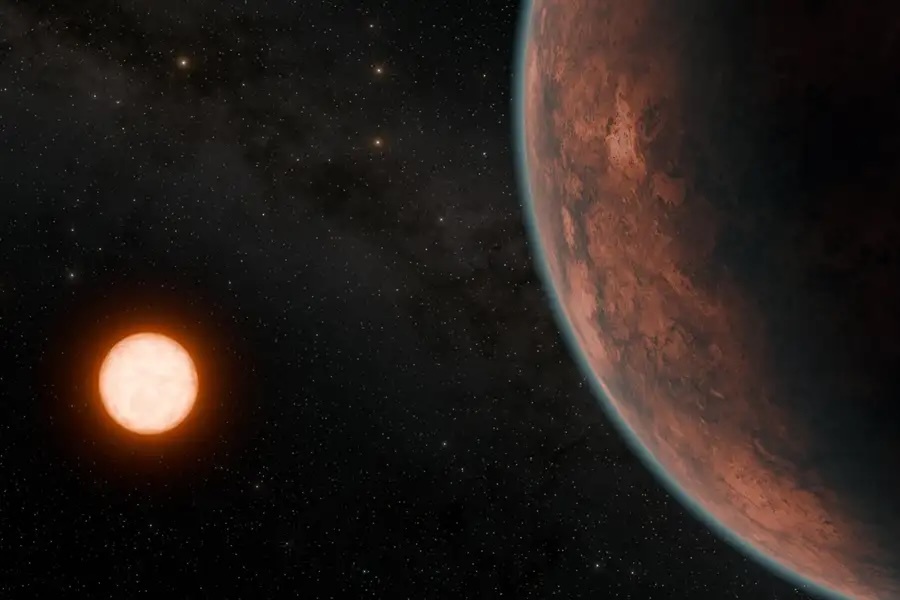25.05.2024
A nearby planet named Gliese 12 b has an estimated surface temperature of 42°C (108°F), making it a promising candidate for liquid water and maybe life

Illustration of the exoplanet Gliese 12 b, which orbits a cool, red dwarf star 40 light years away from Earth
NASA/JPL-Caltech/R. Hurt (Caltech-IPAC)
Astronomers have discovered an Earth-like exoplanet sitting just 40 light years away from our solar system, making it the closest potentially habitable world to us yet.
The planet, which orbits the star Gliese 12 in the constellation Pisces, was first spotted by astronomers using the Transiting Exoplanet Survey Satellite, a NASA space telescope.
“It was identified as an ideal candidate for follow-up analysis,” says Larissa Palethorpe at the University of Edinburgh in the UK.
Palethorpe and her colleagues decided to take a closer look at the planet, dubbed Gliese 12 b, using the European Space Agency’s Characterising Exoplanets Satellite and via ground-based observatories in Australia, Chile and China.
By observing how the brightness of its host star changes as the planet travels across it, the team found that Gliese 12 b has a speedy orbit, whizzing around Gliese 12 in just 12.8 days. It is also slightly smaller than Earth, with a size comparable to that of Venus. With an estimated surface temperature of 42°C (108°F), the planet may be able to harbour liquid water and potentially even life.
“It’s really exciting,” says Palethorpe. “It’s the closest transiting temperate planet to us, and that’s really important for us to do follow-up atmospheric observation using the James Webb Space Telescope.”
To get a better sense of the planet’s potential habitability, the researchers plan to continue monitoring Gliese 12 b to figure out what type of atmosphere it has, if it has one at all.
“It could be Earth-like, it could have Venus’s runaway atmosphere, or somewhere in between,” says Palethorpe. “We’re not entirely sure yet.”
What they find could help us understand how the rocky planets in our own solar system changed over time. “Whatever the results are, it could teach us how Earth became habitable and why Venus did not.”
Quelle: NewScientist
